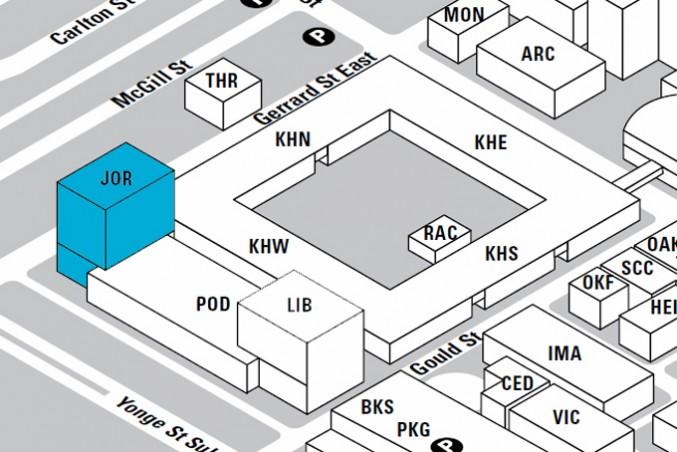By Laura Hensley and Charles Vanegas
Michelle Nguyen was midway through her second-to-last semester when she decided to seek help from the Ryerson Centre for Student Development and Counselling (CSDC). She had been dealing with depression for some time.
“I had kind of been thinking about it since maybe the beginning of the year … but I didn’t go through with it. I thought ‘oh you know it’s just school stress.’ But then [at] the beginning of fourth year [there] was a lot of stress and a lot of pressure,” says Nguyen, now 25.
After contacting the CSDC, Nguyen says she waited two weeks to be seen by a counsellor.
“The initial waiting period is really hard because you think you are going through something really bad and you just can’t wait that long to talk to somebody,” says Nguyen. “When you finally get the urge to make a decision to see somebody, that’s when you need it the most.”
But that wait was typical even for someone like Nguyen, who was deemed to be more “highrisk.” A Maclean’s article published September 2012 cited a 200 per cent increase from the previous year in demand from Ryerson students in crisis situations.
The CSDC felt this surge, with counselling appointment wait times lengthening – ranging from six months to a year. As a result of the huge demand, Ryerson added two more full-time equivalent (FTE) counsellors, for a total of 14.
Since then, Ryerson has incrementally increased funding for the CDSC every year ($960,235 in 2011-12; $1,131,650 in 2012-13; $1,265,884 in 2013 14; $1,320,120 in 2014-15), with nearly all of it coming from tuition and government grants.
But according to Vice-Provost Students, Heather Lane Vetere, Ryerson’s base budget has decreased in each of the six years she’s worked at the university. This explains the slow increasein funding to an amenity meant to serve a student population that has grown to almost 40,000.
“Tuition has gone up every year, but not enough to cover the increases in salaries, in benefits and utilities, and government grants have either stayed the same or gone down. So every year we have had to cut from the base budget to make it balance. Our board has a policy that they cannot approve a deficit budget,” says Lane Vetere.
While wait times differ based on the time of year (ie. it’s easier to get an appointment at the beginning of the semester than during midterm season,) Su-Ting Teo, director of the CSDC, says if students are in crisis, they are often seen within 24 hours. But for those who have “mild to moderate issues,” queues can lengthen and some are recommended to look into group therapy.
“The issue is about what’s an acceptable wait time in some senses. So even at the worst, the four to six month wait time, it is still shorter than anything you are going to find [outside Ryerson] – which are one to three-year wait times,” says Teo. “Unless you pay of course. So that’s the issue: do you have the money to pay for something, and if you don’t, that’s where the wait times come in.”
But wait times aren’t the only aspect afflicting students. Luke Greidanus, an interior design student who has been at Ryerson for six years (originally studying fashion communication), says his experience with the CSDC was so negative that he stopped trying to seek counselling altogether.
Greidanus, 24, had accessed the CSDC twice, seeking help for high frequency anxiety. Both times he was matched with a psychology intern completing their placement at the university. He refers to his sessions as “a Band -Aid” that failed to get to the root of his anxiety. Even worse, after the interns’ placements ended, Greidanus was left without a replacement counsellor.
“I found it really frustrating and that’s when I stopped going to the centre. It felt so pointless. I kept being ditched by the people I kept going to see, and would have to start my therapy all over again,” says Greidanus. “[They just said] ‘by the way I am leaving’ – and this was just a few sessions in – ‘you’re welcome to come to my practice now.'”
Nguyen says that she was initially recommended group therapy, but after her circumstances were reviewed, she was given a one-on-one counsellor – whom she continued to see until the end of her undergrad.
“Having someone to talk to was definitely helpful,” she says. “[My counsellor] was there and she was supportive … I would tell her what’s on my mind and she would listen and she would kind of gently guide me through it. And sometimes she did lead me to some revelations.”
Nguyen has been seeing an external counsellor since graduating, but can only afford to see one that offers a “sliding scale,” as she lacks insurance that covers therapy.
The mental health department gets the most funding out of all of Ryerson student services, but ultimately Lane Vetere says it’s not the university’s job to solve all mental health problems – pointing to places like the Centre for Addiction and Mental Health (CAMH) as more long-term solutions.
“If a student came to school and was diagnosed with cancer, no one would expect us to have an oncologist on staff. But there is a high expectation that we will support and treat mental illness,” says Lane Vetere. “My position has always been that we provide support, and crisis management, and referral- we are not a treatment centre. We can’t support ongoing treatment like a CAMH or a hospital would. We don’t have the resources to do that. Nor is it our mandate. We are an educational institution.”
With files by Alex Downham










Leave a Reply